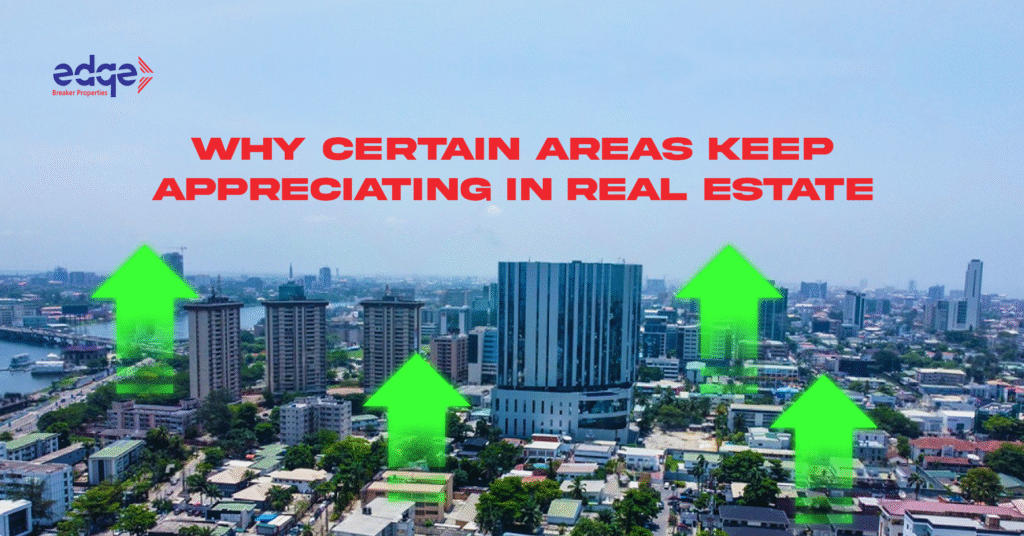Why Certain Areas Keep Appreciating in Real Estate

In real estate, appreciation consistent rise in property value does not happen by chance. Some areas experience rapid and sustained growth while others remain stagnant for years. Understanding why certain areas keep appreciating is crucial for investors, developers, and homebuyers seeking long-term gains.
1. Strategic Location and Accessibility
Location remains the most powerful driver of appreciation. Areas that are strategically positioned near business districts, airports, ports, or major highways naturally attract demand. Easy accessibility to key destinations often translates to higher desirability, which pushes values upward.
2. Infrastructure Development
When governments or private investors inject resources into infrastructure, such as new roads, rail lines, power supply, or water systems, property values respond positively. A once-remote community can experience a surge in appreciation once new infrastructure shortens travel time or enhances living standards.
3. Economic Growth and Job Opportunities
Areas that serve as hubs for industries, technology parks, or commercial centers tend to appreciate faster. As companies set up offices and factories, they bring employment opportunities. This creates population inflows, increases demand for housing, and steadily drives up real estate values.
4. Urbanization and Population Growth
Regions with rising population density often see appreciation because of increased housing demand. Young professionals, families, and migrants move toward urban centers, leading to continuous pressure on available land and properties. This rising demand coupled with limited supply keeps values climbing.
5. Government Policies and Approval
Zoning regulations, favorable land titles, and development-friendly policies play a critical role in appreciation. An area with clear documentation, secure titles, and government-backed development plans provides confidence to investors, making it more attractive and valuable over time.
6. Lifestyle Amenities and Social Infrastructure
Beyond roads and bridges, appreciation is fueled by schools, hospitals, shopping centers, and recreational hubs. Buyers increasingly seek communities that offer quality living, not just shelter. Areas with robust social infrastructure consistently outperform underdeveloped regions.
7. Speculative Interest and Early Investments
Sometimes, appreciation is driven by investor foresight. Early movers often identify undervalued locations with high future potential, be it because of a proposed airport, industrial hub, or government project. As speculators purchase land or housing, they create demand that accelerates appreciation.
8. Scarcity of Developable Land
Where supply is limited, either due to geography (coastal areas, city centers) or regulation, values tend to rise. Scarcity ensures that as demand grows, competition intensifies, and appreciation becomes inevitable.
Conclusion
Appreciation is not random; it is the result of location, infrastructure, economic activities, policies, and demand dynamics. Investors who understand these drivers can make informed choices, positioning themselves in areas with proven and future potential.In real estate, the goal is not just to buy property but to buy into growth and that comes from recognizing why certain areas keep appreciating.
Reference
Oluwatosin Damilare
Marketing Department

